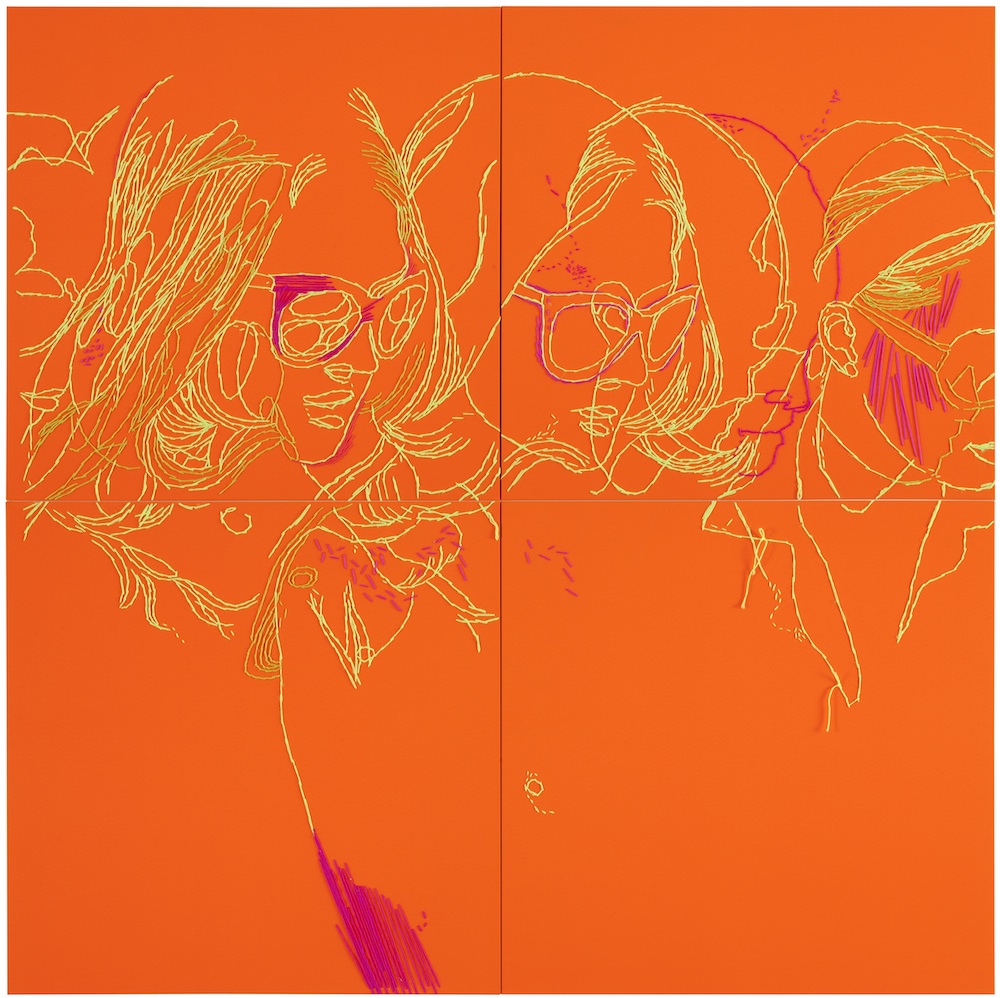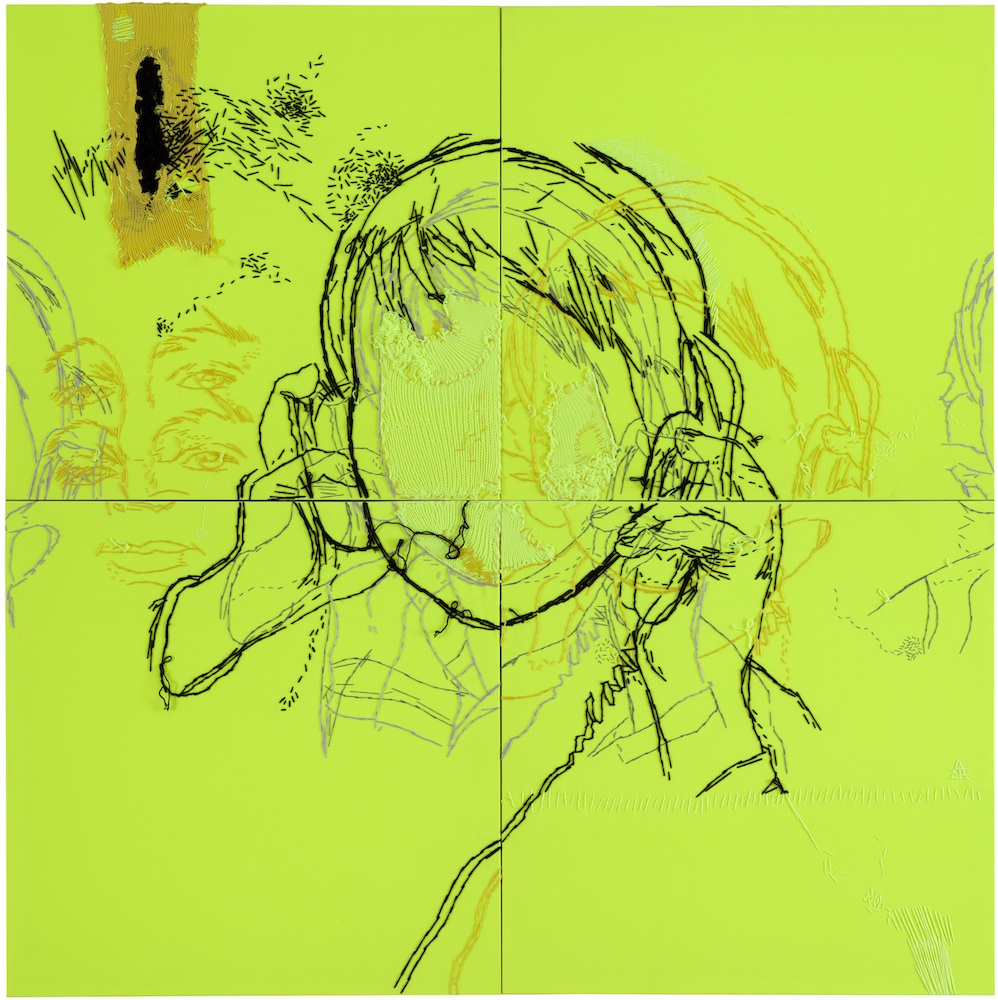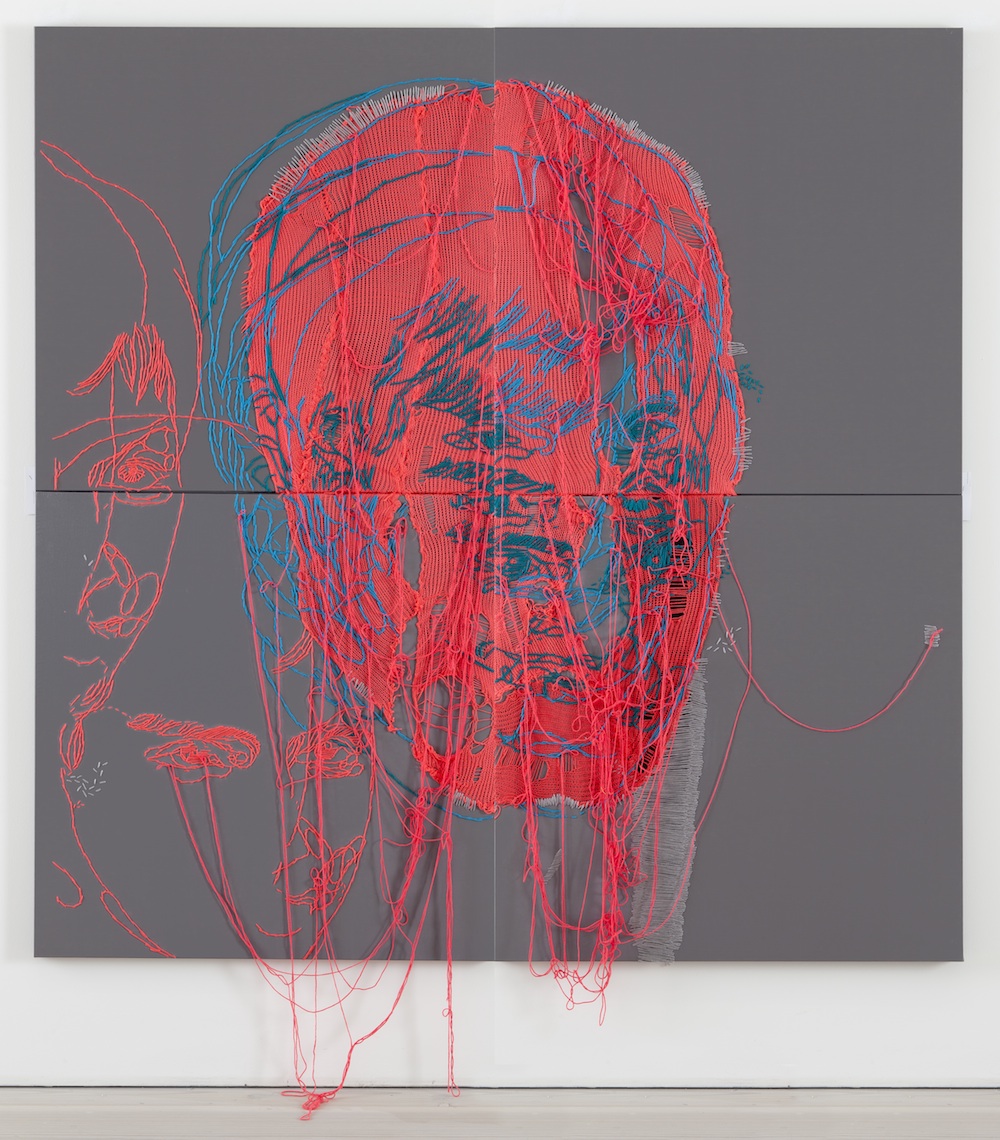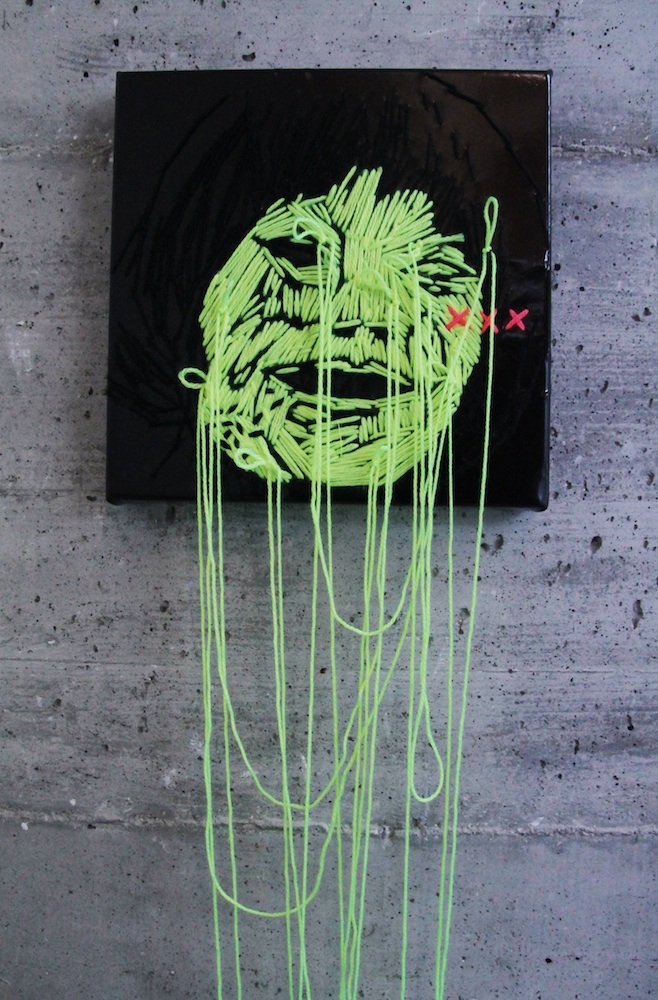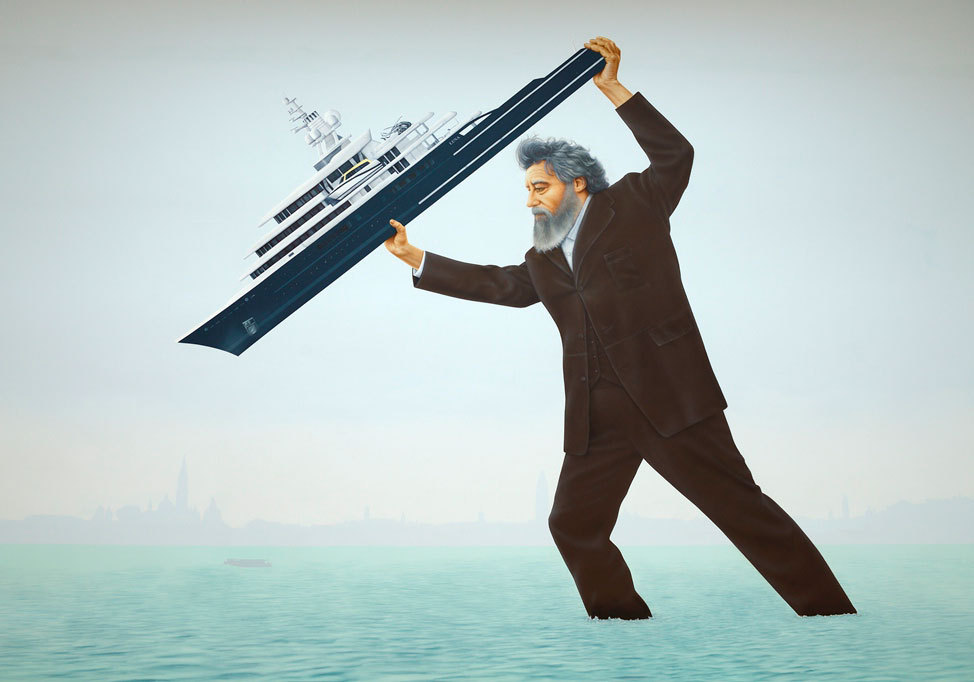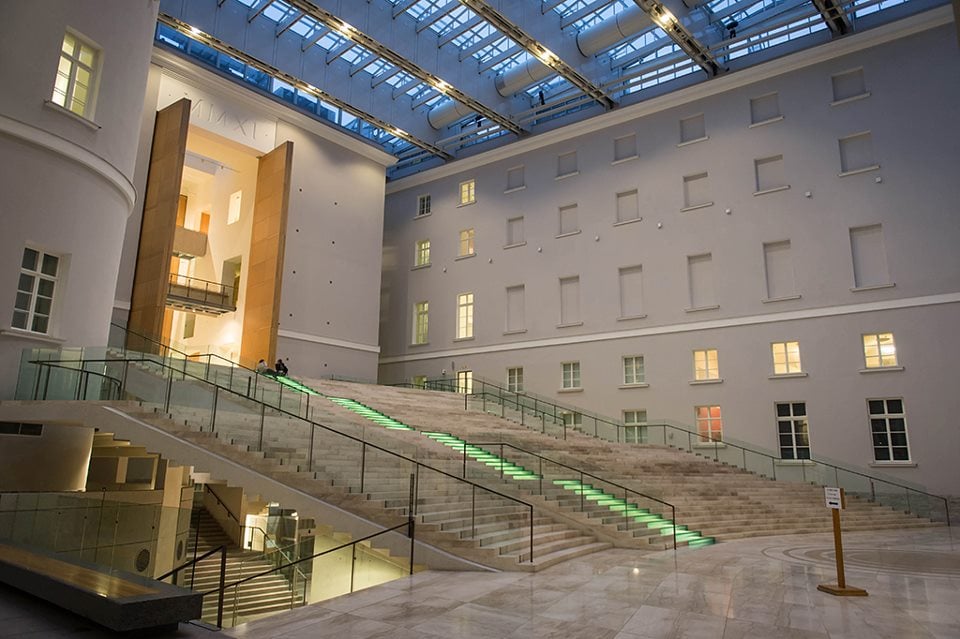Good yarn: artist Tatiana Akhmetgalieva embroiders the truth about modern life
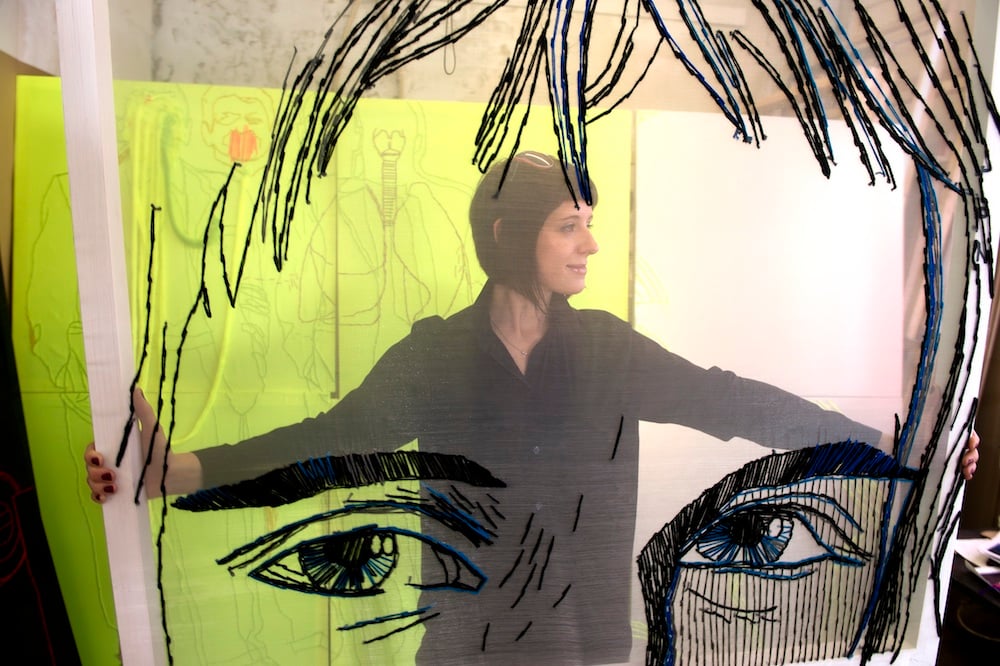
Siberian-born artist Tatiana Akhmetgalieva adorns her canvases with yarn, using ancient techniques to investigate modern concerns. As her new show opens in Milan, Ekaterina Shcherbakova pulls together the threads
The hypermodern world of look-at-me Instagram aesthetics — all virtual navel-gazing in neon green and orange — is woven together with the distant origins of art in Tatiana Akhmetgalieva’s yarn-embroidered canvases. Akhmetgalieva is one of a vanishingly small number of young Russian artists that command the attention of European gallerists and audiences. Since coming to the art world’s attention as a finalist in the Kandinsky Art Prize in 2010, she has been widely exhibited both in Russia and in Europe. On 16 May, Akhmetgalieva’s latest show, Hello World! opened at Milan’s Mimmo Scognamiglio gallery, giving Italian audiences a chance to witness her rare ability to combine traditional embroidery and contemporary mixed media in work that meditates both on the ancient rhythms of her Siberian home and the deracinated imagery of online identity.
Hello World! grew out of Akhmetgalieva’s previous experiment, Synthetic Syndrome (2011), in which she investigated the dominance of virtual values over real relationships. The new show draws on her personal experience of the contradictions and idiosyncrasies of contemporary life. In particular her works reference the new possibilities for communication and self-presentation offered by online social networking services like Instagram that allow amateur photographers to curate their own lives and transform them into beautiful mini-dramas and novellas. Akhmetgalieva produces embroidered portraits that replicate contemporary classics of internet portraiture, like the self-shot in the mirror or the reclining point-of-view picture that takes in the amateur snapper’s feet and the landscape. The shift of these ubiquitous images from pixel to thread changes our perspective, while the use of attention-grabbing neon colours reminds us of the logic of ostentatious online self-demonstration. Her canvases both reference and update the aesthetics of Pop Art — she is not scrutinising the mechanisms of brands and commercial culture, but rather examining our consumption of certain ideas, and, through our constant self-presentation, our consumption of each other. Many of the portraits seem to incorporate more than one person, embodying the multiple personalities created by the virtual world.
“The use of yarn seems to connect Akhmetgalieva with primordial female creativity”
In an era of new media, the use of embroidery and yarn — techniques and materials that are centuries old in fine and applied art — is striking and unexpected. It has been a feature of Akhmetgalieva’s output since she studied textile design at the Pro Arte Institute and St Petersburg State Academy of Arts and Industry. Her delicate use of thread — one can’t help but wonder how long these works take to make — has often been understood as a metaphor for life, for the passage of time, or for the intricate twists and turns of a story. These readings are supported by the title of her work for the Ural Industrial Biennial in Yekaterinburg, Clotho — one of the Fates of Greek mythology, who wove the destinies of humankind. But, to my mind, above all Akhmetgalieva’s threads seem to be striving to weave together the abstract, the mundane and the virtual elements of our contemporary realities in an attempt to solve the puzzle of the loneliness of the modern individual.
The artist herself says that embroidery is just another way of drawing, like video or ink. But one can’t help but notice certain similarities between Akhmetgalieva’s work and that of Louise Bourgeois, an icon of western feminist art. Bourgeois’s late period, from the mid-Nineties onward, is marked by the use of fabric. In accordance with the general theme of personal memory explicit in her work, the French artist used towels, clothes, bed sheets, lace and thread to embody memories that have been cut apart and then sewn back together, bringing to life the desire for reparation, reformation and liberation from the past, which tallies with Bourgeois’s long-established interest in the psychoanalytical aspect of creativity.
Bourgeois’s use of fabric is an evident reference to the artists’ origins and to her mother, Josephine Fauriaux, a weaver who worked in the family tapestry restoration workshop. We remember that weaving has traditionally been a female occupation, and so the use of yarn instantly seems to connect Akhmetgalieva with primordial female creativity. Thanks to this material connection, and to her references to intimate, quasi-maternal development, Akhmetgalieva is unavoidably associated with women’s art and feminism. One of the first questions posed by journalists, art critics and viewers is whether she considers herself a feminist artist and what her perception is of the position of women in art and in contemporary Russian society. Akhmetgalieva, however, disavows the notion of any gender division in art and conceives of her work outside of a feminist paradigm. What is more, she is happy to say that her art is apolitical.
“Akhmetgalieva is adamant that art is about the perception of beauty”
Nevertheless, the artist does view her art as strongly linked with her personal life, which serves as a source for inspiration and reflection. For her, thread is a visible connection to a sense of the archaic, something which can be traced back to the artist’s origins in Siberia. (She is from Kemerovo, a town of about half a million people between Novosibirsk and Krasnoyarsk.) For Akhmetgalieva, Siberia is strongly connected with the maternal, with the abundance of nature and local mythology. The Siberian theme is recurrent in the artist’s projects, as for instance in The Chrysalis Stage (2009) or My Room (2012), and is often symbolised by a cocoon wound from layers of threads. Themes of maturation and birth recur, seemingly tracing the artist’s own development. The Chrysalis Stage used biological genesis as a metaphor for the emergence of the artist, and a later show, Incubator (2011), dwelt on the parallels between the premature birth of children (her mother is a neonatal nurse) and the immaturity of civilisation. My Room takes the story further, investigating private feelings and memories; Hello World!, with its focus on communication, marks the culmination of the moment of contact with the outside world.
Akhmetgalieva is adamant that art is about the perception of beauty. But, despite this Romantic streak, she isn’t immersed in a world of escapism: through the intimate perceptions of the changes in her life which echo through her work the viewer discovers the contradictions and paradoxes of the artist’s reality. It may be avowedly apolitical, and self-consciously intricate and beautiful, but above all Akhmetgalieva’s work is a very sincere, clearly articulated personal story that scrutinises the dysfunctions of contemporary life without recourse to harsh or anxious critique. What she does is simply highlight the discrepancies and gaps in life, sewing, or rather, drawing them together on the surface of the canvas.
